Planning next year's garden is something you may want to consider before winter. Making notes now will keep you ahead of the game come spring.
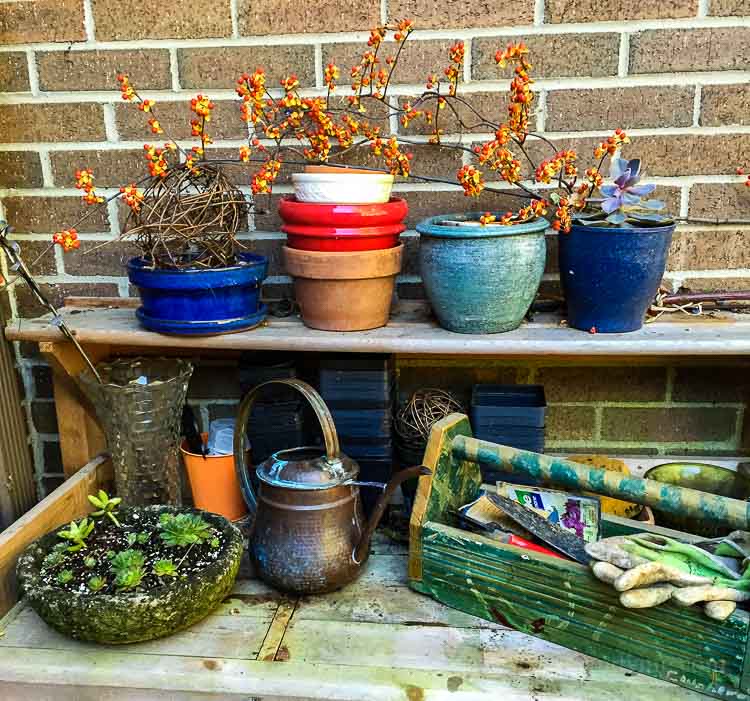
This is the final Tuesdays in the Garden series and today I'm talking about getting the garden ready for winter. Every year in the fall I assess my garden by walking around, taking pictures, and making notes in a small notebook. Come January and February I'm so ready to start planning next year's garden and these notes are a great place to start.
Most of the work I leave until spring, such as pruning perennials. I like to keep the foliage around for winter interest, and to help out the wildlife. I also usually divide perennials in the spring. Still, come fall and early winter, I definitely like to take a inventory of what I need to do come spring.
Steps for Planning Next Year's Garden
1. Over Grown Plants
Make a note for those plants which have overgrown their space. Maybe they taking over an area like the perennial begonia above.
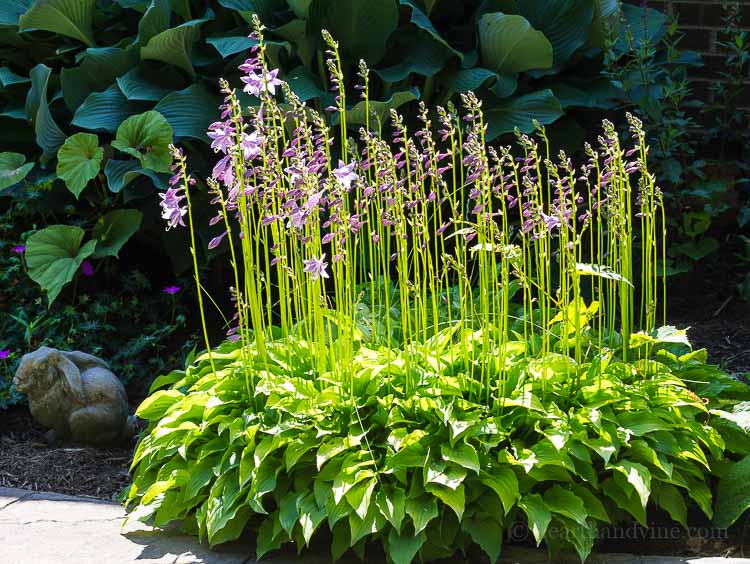
Or perhaps they are growing into the sidewalk. Make a note to re-locate these guys or give some of them away.
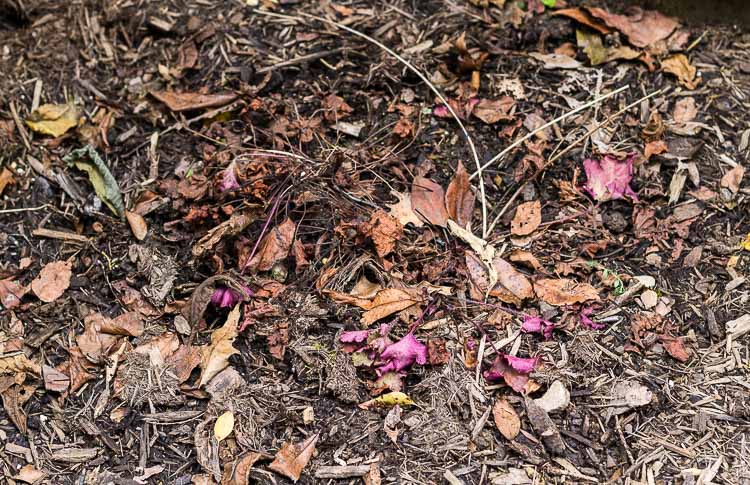
2. Bare Spots
Make a note of bare spots and areas which could use new plants to round out your landscape. There use to be a pretty heuchera in the space above. I'm not sure why it died but I suspect rodents, since there are a few holes near this area. I'll make a note to replace it with something a little tougher. I have another spot at the bottom of the hill where I have tried to grow lavender and then this year, sage. They have all died so I'm guessing the area may be too wet. Next year I'll try something that will enjoy wet feet.
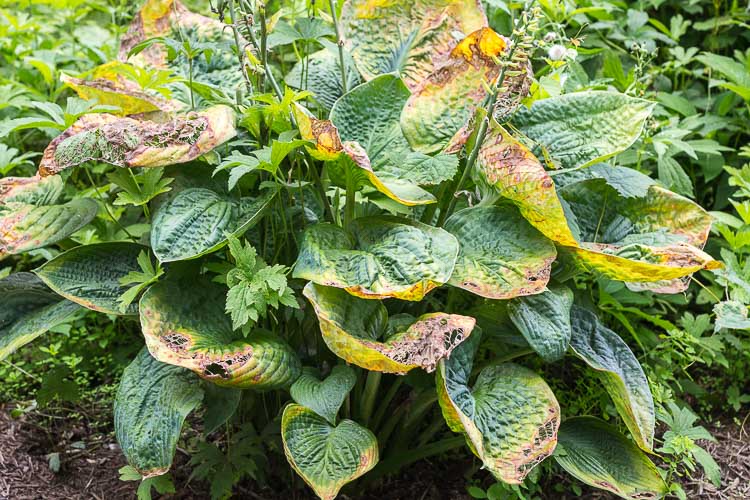
3. Poor Plant Growth
Lastly make note of any plants that just haven't done well. If this is the first year you've grown this plant you may want to give it some time. However, sometimes a plant just doesn't seem suited to one area even after you've tried following the growing instructions for light and water requirements. In addition, you may no longer like something that you originally thought was a good idea. You can move the plant to a better suited area, or give it away. For example the large leaf hosta above is clearly getting too much sun as indicated by its burned leaves. This is due to a large maple being removed nearby. In fact, there are a couple of hosta in the same area that will need to be relocated, or I'll have to find a way to add in some shade.

I hope you found this post helpful and will take time some time to evaluate what is happening in your garden so that you will have head start on what needs to be done for next year's garden. It's an easy and worthwhile task, and it gives you an excuse to plan what you might buy during the winter while browsing through all the beautiful plant catalogs.




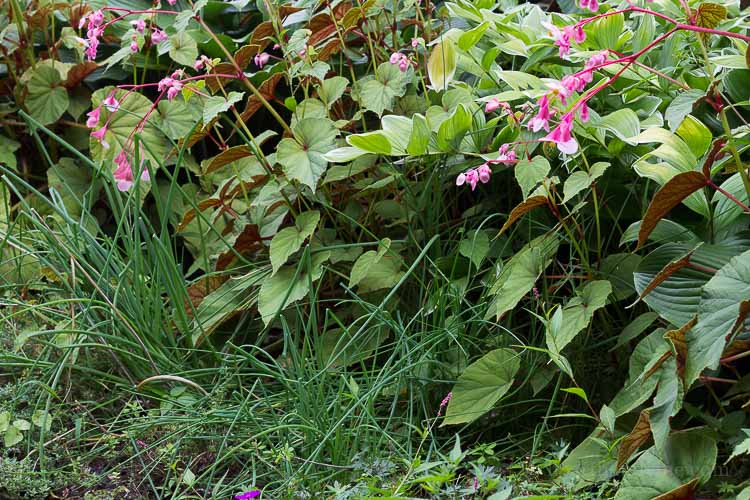
Angie Rose
I do these exact same things Patti! Taking notes at the end of the season makes a big difference. There are some years where I get so lazy and lax about my garden by the time fall comes around, but taking little notes saves me come spring! I have few plants that need to be moved. Even if I don't get around to it now, my notes will remind me next spring to get to work! Great tips 🙂
Patti Estep
Hi Angie,
I'm sure you have a lot of great photos to analyze from year to year. We all get so busy so every little tips (especially the easy ones) helps.
Diane Williams
I LOVE that you take pictures and make notes for next spring. We always try to remember all the things we want to do for the next garden season. Pics are a brilliant way to remember those problems and fix them in early spring or Fall. Awesome Tips. Thanks!
Patti Estep
Hi Diane,
I'm so glad you like this approach. It's a small thing but it works for me.
Michelle Marine
I need to do a better job of making notes like you do. We had quite a few plants that didn't return this spring and we never replaced them. It's always interesting to reflect on what didn't work on a space and what to replace it with. Great tips!
Patti Estep
Just another excuse to go plant shopping for me. 😉
Jami
Ah, gardening is constantly a learning experience, right Patti? What will grow best where. Then there are the established beds that you think are 'done' and then something happens beyond your control (like trees coming down) and boom - back to the drawing board. Well, it's never dull, is it? 😉
Patti Estep
Yes Jami, I so agree. Never a dull moment but that's half the fun. Especially when things turn out great. I guess the ups are not as fun if we don't have some downs.
Shelly
These are great tips, Patti. I know we had a few plants that didn't thrive as well as they could have. If I can find a better place for them I'll move them in the spring. It's funny how a plant can live in one spot for years and be happy and then the next they don't seem to thrive at all.
Patti Estep
Hi Shelly,
You are so right. Sometimes I just can't figure out why a plant doesn't take. I wonder if some perennials for example are not meant to go on and on.
Carole
I've enjoyed these Tuesday's in the garden and as always helpful tips follow. Great advice, Still seeking time to get my fall garden in but think I may reconsider. We'll see what this week holds as I would love to be growing some fresh lettuce over winter. We've been burning so my plan is to take those ashes and use them in the new beds. Here's to planning for spring early... Great idea!
Patti Estep
Hi Carole,
Well, you can't do everything, right? I'm sure whatever you decide to do it will turn out great.